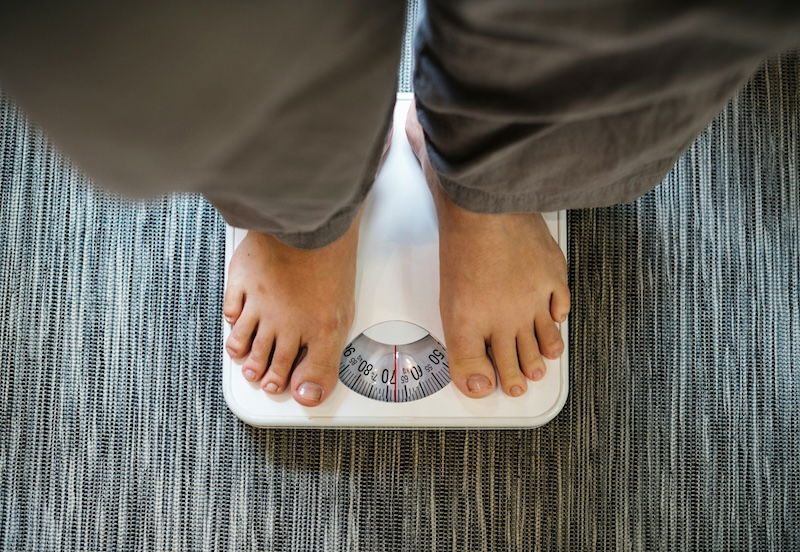Guest Essay by Kip Hansen — 10 January 2025 — 1400 words/5 minutes
What are Ultraprocessed Foods? The UPF literature gives long and confused definitions, but in almost every case, falls back on the definition provided by Carlos A. Monteiro (and his colleagues Inês Castro, Renata Bertazzi-Levy, Rafael Claro and Geoffrey Cannon) in his original work in 2009 on the subject titled: “Nutrition and health. The issue is not food, nor nutrients, so muchas processing”.
[Note: The use of the word “muchas” is in the original, Monteiro is Brazilian.]
I give it here in a graphic, exactly as used in Monteiro 2019, a restatement of the original work (link as a .docx file
, much easier to read):

[ larger image in new tab ]
That definition has not changed in all these years since, but the actual lists used by researchers in all of studies ‘measuring exposure to UPFs’ in Food Frequency Questionnaires (FFQs) and 24-hour dietary recalls (24HR) has changed over time – adding another layer of uncertainty to the results of the studies when pooled. Not all studies used the same FFQ and not all decisions as to which items in FFQs/24hr Recalls were to be considered UPFs for each study. Lane et al. 2023 [ .pdf ] includes this:
“SACN [UK’s Scientific Advisory Committee on Nutrition] expressed concerns about various key points. For example, it highlighted that the available studies applying the Nova system are primarily epidemiological in nature and may lack adequate consideration of confounding factors or covariates. Criticisms of Nova as a classification system also exist, with concerns raised about its possible imprecision and inconsistency among evaluators. In contrast, more recent assessments show acceptable construct validity and strong agreement among coders, with the definitions and examples provided by the Nova system deemed adequate in classifying more than 70% of the food items reported in food frequency questionnaires from various cohorts from the US, as well as more than 90% of the food items reported in 24 hour dietary recalls from participants in a national Brazilian dietary survey.”
Elizabeth et al. 2020 Supplementary Information gives a chart of changes to UPF items since 2009:


Then there is one of the more popular short-form definitions, offered by Dr Chris Van Tulleken, an infectious diseases doctor at University College London, a BBC science presenter and a New York Times bestselling author who, gave this simple one-sentence: “If it’s wrapped in plastic and it contains at least one ingredient that you don’t typically find in a domestic kitchen, then it’s ultra-processed food.””
The Supplemental information of Monteiro et al. 2019 labels its chart of NOVA food groups:
“NOVA food groups: definition according to the extent and purpose of food processing”
Ralph Nader refers to UPFs as “Ultraprocessed Deadly Corporate Food”.
We see the anti-corporate mantra appearing in the definitions of UPFs, even in the original from Monteiro et al. (2019):
“Their convenience (imperishable, ready-to-consume), hyper-palatability, branding and ownership by transnational corporations, and aggressive marketing give ultra-processed foods enormous market advantages over all other NOVA food groups. Marketing strategies used worldwide include vivid packaging, health claims, special deals with retailers to secure prime shelf space, establishment of franchised catering outlets, and campaigns using social, electronic, broadcast and print media, including to children and in schools, often with vast budgets.”
You may rightly ask yourself, how does the ownership of the manufacturer of a food cause heart disease? or diabetes? or all-cause-mortality? How does the “extent and purposes” of the processes used to manufacture the food cause those things? Neither food company ownership or processing purposes are physical components of the food consumed.
You would not be the only one asking. Opinion in the nutrition field is growing in both directions: support for anti-UPFs ideas has grown to include all the liberal journals and organizations, including the UN World Health Organization and various national health organization, as they flock to the band-wagon for research funds and publication credits. At the same time, individual nutrition experts are beginning to speak out against the anti-UPF movement particularly its use all-inclusive definitions and the potential to nutritionally worsen, instead of improve, human diets.
Levine and Ubbink (2023) , from the Department of Food Science and Nutrition, University of Minnesota, says this:
“The world’s daily food supply is and will remain critically and increasingly dependent on the processing of foods and ingredients. With future population growth, climate change and the need for agricultural practices to become more sustainable, continued innovation in food processing is essential to guarantee a sustainable, healthy, and abundant food supply.”
“While many types of processing can have negative effects, food processing does not need to result in only unhealthy foods, but rather constitutes a critical and essential component of our food system. Ensuring public trust in food processing technology is undermined by the categorization of ultra‐processed foods without more nuanced understanding of the factors that determine the nutritional value (positive or negative) of these foods.”
FoodDrinkEurope, an food industry advocacy group in Europe, offers a review of the science on UPFs (link is a .pdf ) which includes these critical points (out of very many):
“Classifications are ideologically biased
Classifying foods according to their assumed ‘purpose’, including their design to be, for example, ‘highly profitable’, ‘intensely appealing’ or ‘convenient’ is subjective and has been suggested to reflect an ideological bias against modern food production systems (Forde, 2023b [.pdf]; Visioli et al., 2022 [.pdf]). There is no evidence that foods which are unprofitable, unpalatable, expensive or inconvenient are linked to better health outcomes (Forde, 2023b [.pdf])
Classifications are too broad and inclusive and not based on scientific evidence
The classifications are diverse, based on the extent and nature of change in a food from its original form, including changing inherent properties of foods, the addition of ingredients, as well as considering the place of processing, and the purpose of processing. There is no agreement as to what constitutes a processed food or different degrees of processing, including to what extent they should only reflect technical processes and/or include formulation/ingredients. From a food science and technology perspective, without evidence for a correlation between the extent of processing and a products nutritional value, these aspects should remain distinct. Furthermore, the classifications seem to assume that most food processing is deleterious for health, and are hypothesis driven rather than derived from strong scientific evidence i.e. studies using NOVA to support claims made by the NOVA classification itself may represent a circular argument (Sadler et al., 2021).
Without scientific evidence for adverse effects of specific ingredients or processing methods, the ultra-processed category may be too broad and inclusive – covering a high proportion of energy sources (up to 60% in some developed countries) and approximately ten to twelve different food groups with a wide and diverse nutrient composition (Forde, 2023a [.pdf], 2023b [.pdf]).”
The FoodDrinkEurope review [remember, it was produced by a food industry advocacy group] may be biased against the anti-UPF movement, but it does include a extensive list of the literature on the subject through early 2024, and its summaries of the papers listed seem to be straightforward. In any case, it represents a good summary of the criticisms of the NOVA system of classification of foods from the professional nutrition field.
The best actual answer to the question:
“What are Ultraprocessed Foods, exactly?”
seems to be:
“Almost everything on the shelves, in the aisles, of your grocery store and in the cupboards and refrigerators of your home.”
Such an answer leaves us to ask “If not UPFs, what are people to eat?”
# # # # #
Author’s Comment:
This is yet another ongoing Modern Scientific Controversey (MSC). That means that scientists and experts are taking sides, for and against, and battling it out in the media and in the journals. In these controversies, these “Wars”, the usual niceties are often forgotten and papers are written to bash the “other side”, editorials are written in which insinuations of scientific impropriety are allowed to be spoken. And, as we have seen in other MSCs, views are hardened and papers become more and more biased towards whatever view attracts more research funds and buys more publication credits. Currently, journals favor “UPFs are bad”, which has become a Popular Health Fad, but, at the same time, nutrition experts willing to take a contrary view are making some headway in the journals and are being given some preferential space in the mass media as the contrarian view.
The next part of this series will cover a more in-depth view of what is up with the science, as opposed to food-world politics, of the UPF issue.
Thanks for reading.
# # # # #
Related
Discover more from Watts Up With That?
Subscribe to get the latest posts sent to your email.







Leave a Comment